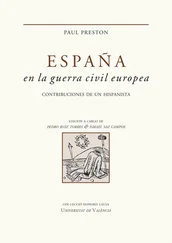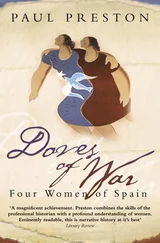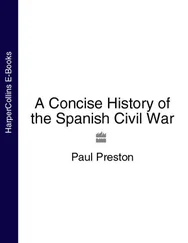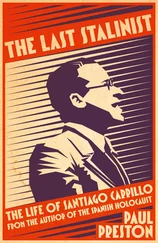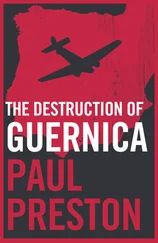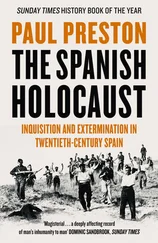1 ...6 7 8 10 11 12 ...18 In many respects, the chaotic period 1873–4 was to Spain what 1848–9 had been elsewhere in Europe. Having plucked up the courage to challenge the old order and establish a short-lived Republic, the liberal bourgeoisie was frightened out of its reforming ambitions by the spectre of proletarian disorder. When the army restored the monarchy in the person of Alfonso XII, the middle classes abandoned their reformist ideals in return for social peace. The subsequent relation of forces between the landed oligarchy, the urban bourgeoisie and the remainder of the population was perfectly represented by the so-called Restoration political system created in 1876. Indeed, it would differ little in composition from what had gone before except that parties would alternate in power peacefully rather than by a combination of insurrections and military coups. A provisional government was established under the conservative Antonio Cánovas del Castillo, who quickly set about drafting a new Constitution. After sixty years of civil wars, disastrous rule by generals and political corruption, he was convinced that what was necessary was a period of tranquillity in which industries might develop.
Cultured and widely read, Cánovas believed that the prosperity enjoyed by the dominant power of the day, Great Britain, was the result of the stability provided by its two-party system. His admiration of the British parliamentary system allegedly extended to learning by heart some of the speeches of Gladstone and Disraeli. In a bid to emulate British success, he had set out to copy, outwardly at least, what he believed to be its secret. He was determined both to exclude the army from political power and to run no risks of a radical electorate undermining his plan to consolidate the recently restored monarchy. Thus an apparent working model of the British system was elaborated whereby the Conservative Party under Cánovas and the Liberal Party under Sagasta would take turns in power. The tool necessary for this to function without interference by the electorate was electoral falsification.39 The system came to be known as the turno pacífico , that is to say the peaceful alternation in power of the two monarchist or ‘dynastic’ parties. Thus the turno , in the words of the liberal reformer Gumersindo de Azcárate, far from replicating the British system was merely ‘a ridiculous parody in which everything is a farce and a lie’.40 Salvador de Madariaga wrote that Cánovas ‘relied on force and fiction’ and described him as ‘personally honest and honourable’ but ‘the greatest corrupter of political life which modern Spain has known’.41
The micro-managing of elections ensured that, for the next half-century, power would remain in the hands of the same families that had held it before 1876. Entire dynasties, fathers, sons and sons-in-law, brothers and brothers-in-law would monopolize parliamentary seats. Such would be the case of the family of Álvaro de Figueroa, the Conde de Romanones, in Guadalajara with tentacles in Baeza and Úbeda in Jaén, Castuera in Badajoz and Cartagena in Murcia. An equally striking example was the family of Eugenio Montero Ríos, the main cacique of the four provinces of Galicia, who was Minister of Development from 1885 to 1886, Minister of Justice between December 1892 and July 1893 and eventually Prime Minister in 1905. From his base in Lourizán in Pontevedra, he used his influence to promote the political careers of his sons and sons-in-law. Sagasta was equally watchful of the parliamentary welfare of his sons-in-law. Francisco Silvela y de Le Vielleuze, Cánovas’s eventual successor at the head of the Conservative Party, was the all-powerful cacique of Ávila. Although he criticized the electoral falsification of the turno pacífico , he placed members of his family in some of the most important government positions. Juan de la Cierva y Peñafiel, the omnipotent cacique of Murcia, similarly promoted his family. Indeed, it was not uncommon for parliamentary seats, senior government administrative posts and sometimes even government ministries to be virtually bequeathed from father to son.42
The two political parties did not have strongly defined ideologies or policies but were rather groups of notables representing the interests of two sections of the landed oligarchy. The Conservatives looked mainly to the concerns of the wine and olive growers of the south while the Liberals protected the interests of the wheat growers of the centre. The differences between them were minimal. They were known as the ‘dynastic’ parties because they were both committed to the monarchy and were not divided on issues regarding the social order or the sanctity of property. As their name suggested, the Liberals were less authoritarian and, unlike the firmly Catholic Conservatives, inclined to be rather more critical of the Church. The main differences were to do with trade. The Conservatives favoured the free trade required by their constituency of export fruit growers and wine producers while the Liberals represented the needs of the inefficient wheat growers who wanted protection from the great international producers of Canada, Argentina and Australia. To give an example of the problem – in Barcelona in 1884, some 60 per cent of all wheat consumed came from Castile, yet two years later it was a mere 10 per cent. The various components of the northern industrial bourgeoisie were barely represented within the system but, for the moment, were content, as Cánovas had hoped, to devote their activities to economic expansion in an atmosphere of stability. Until, in the early twentieth century, they began to organize their own parties, the Catalan textile manufacturers tended to support the Liberals because of their shared interest in restrictive tariffs, in their case to protect the Spanish market against cheaper British and Indian competition. In contrast, the Basques, exporters of iron ore, tended to support the Conservative free traders. Nevertheless, because of its lack of representation, the Catalan industrial bourgeoisie was forced to act as little more than a pressure group. Thus, despite having interests in common with the agrarian protectionists, they could be attacked by Liberals and Conservatives alike as the mouthpieces of Catalan nationalism.43
It was virtually impossible for any political aspirations to find legal expression unless they were in the interests of the two great oligarchical parties. Liberal and Conservative governments followed one another with soporific regularity. Rafael Shaw, an English journalist who lived in Barcelona, wrote in 1910:
Ministerial changes in Spain are the outcome of a tacit arrangement made some thirty years ago between Antonio Cánovas del Castillo and Práxedes Mateo Sagasta, the then leaders of the two main parties, the Liberals and the Conservatives, and continued by their successors, that each side should have its fair share of the loaves and fishes. After one party had been in office three or four years it was agreed by common consent that the time had come for the other side to have a turn. Thus, as Major Martín Hume says: ‘Dishonest Governments are faced in sham battle by dishonest Oppositions, and parliamentary institutions, instead of being a public check upon abuses, are simply a mask behind which a large number of politicians may carry on their nefarious trade with impunity.’
Shaw explained the impotence of the electorate to change this system as the consequence of ‘the tentacles of the octopus of corruption which holds the whole country in its grip. The simple fact is that the great mass of the people have no voice at all in the election of their representatives. Nominally voting is free: actually it is not.’44
In theory, governments were in power for five years but in practice would resign because of defeat on a particular vote, hostile public opinion, the loss of party support for the Prime Minister or some intractable social or economic problem on the horizon. The King, in theory, as the mouthpiece of public opinion or, in reality, on the basis of his prejudices or caprice, had the power to change governments because he could force an administration to resign. He could then decide to whom to grant a royal decree of dissolution of the Cortes. The rather frivolous Alfonso XIII would abuse this power.45 The newly chosen Prime Minister, often but not always the leader of the other party, would form a government. Then, he and his Minister of the Interior would spend the next few months arranging an electoral victory that both justified his party’s presence in power and gave the outgoing party a decent presence in the Cortes. When the petitions of both parties had been examined, lists of candidates would be drawn up that would ensure a substantial majority for the new Prime Minister. This process was known as the encasillado , each candidate who was selected to win a seat placed in the pigeonhole ( casilla ). The agreement of both parties was forthcoming. Sometimes results were faked in the Ministry of the Interior but more often they were fixed at the local level. The task of ensuring the election of the selected candidates fell to the provincial governor of each province. He would then negotiate with the local town bosses or caciques . They would deliver the vote for the government’s candidates in return for government patronage. The candidates chosen in Madrid, who were then ‘parachuted’ into the constituency, were known as cuneros . On average about half of successful candidates were cuneros , that is to say with no links to the area that they would represent. Nevertheless, sometimes the local oligarchs would accept a cunero willingly because his political influence boded well for the area.46
Читать дальше

